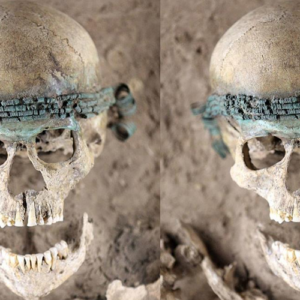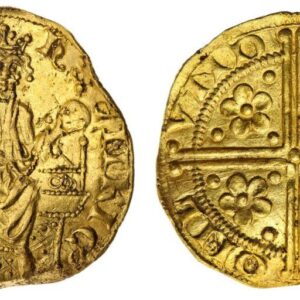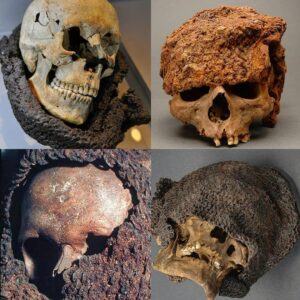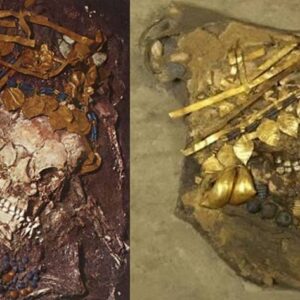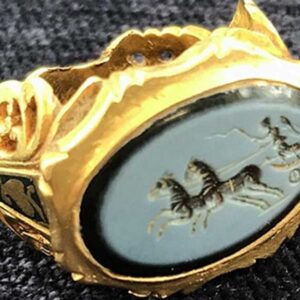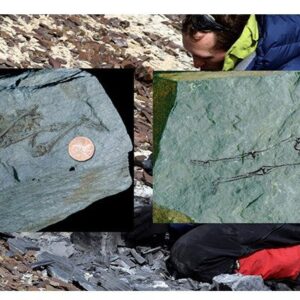Archeologists have unearthed the lost remains of a Teotihuacan village, including human burials, in the heart of Mexico City.
Ceramics found scattered around the site, which is located 1.5 miles (2.4 kilometers) northwest of the city’s historical center, indicate the village dates from around A.D. 450 to 650 and may have housed a community of artisans and craftspeople.

A picture of a human skeleton unearthed in Mexico City. (Photo: Live Science)
“The finding was surprising,” said Juan Carlos Campos-Varela, an archaeologist at Mexico’s National Institute of History and Anthropology (INAH) Directorate of Archeological Salvage, who co-led the dig. “It shows that 1,300 years ago, the islets inside Lake Texcoco, on which Mexico City was founded [after the lake was drained], already supported a permanent population that took advantage of the resources of the lake environment,” he told Live Science in an email.
The newly excavated settlement may have formed during the “ruralization” of Teotihuacan, an ancient metropolis that flourished in the highlands of what is now central Mexico between A.D. 100 and 650, Campos-Varela said. The village is located 25 miles (40 km) to the southwest of Teotihuacan and may have been one of several small towns that supported themselves through subsistence farming and fishing as the ancient city reached its zenith. These settlements maintained commercial ties to Teotihuacan, and the new discoveries shed light on the role these settlements played in the city’s supply network, Campos-Varela said.
“The discovery is rare because it occurred in a fully urbanized context where the possibility of finding archeological evidence associated with the Teotihuacan culture was very low,” he added.
Gifted craftspeople
Archeologist Francisco González Rul discovered the first clues of this village’s existence in the 1960s, during construction works in the Mexican capital. Based on the ceramics he unearthed, González Rul suggested at the time that the inhabitants were self-reliant fishers and gatherers. The new excavations confirmed this.
Several previously unseen architectural structures — including post holes, flooring, channels, and an artesian well — as well as ceramics have come to light. The excavation also unearthed three human burials containing the skeletons of two adults and a child.
Teotihuacan ceramics are categorized into phases, according to a 2016 study in the journal PLOS One. The newfound ceramics displayed features that correspond to the Xolalpan (A.D. 350 to 550) and Metepec (A.D. 550 to 600) phases in the 2016 study, which enabled the researchers to date the remains of the village and its inhabitants.
The Teotihuacanos were gifted artists and craftspeople, said Michael Smith, a professor of archeology and director of the Teotihuacan Research Laboratory at Arizona State University. “To decorate the walls of their houses and temples, the Teotihuacanos used the same fresco technique used by Michelangelo to paint the Sistine Chapel,” Smith told Live Science in an email. “They also used the fresco technique on ceramic vessels.”
The ceramics could reveal important information about trade with Teotihuacan through chemical analysis, Smith said.
Archeologists have concluded the excavations and are now analyzing the discovered materials and bones. Much of Teotihuacan’s sprawling architecture remains buried, but the site is largely unaffected by modern construction and will eventually be unearthed in its entirety, the Arizona State University said.
